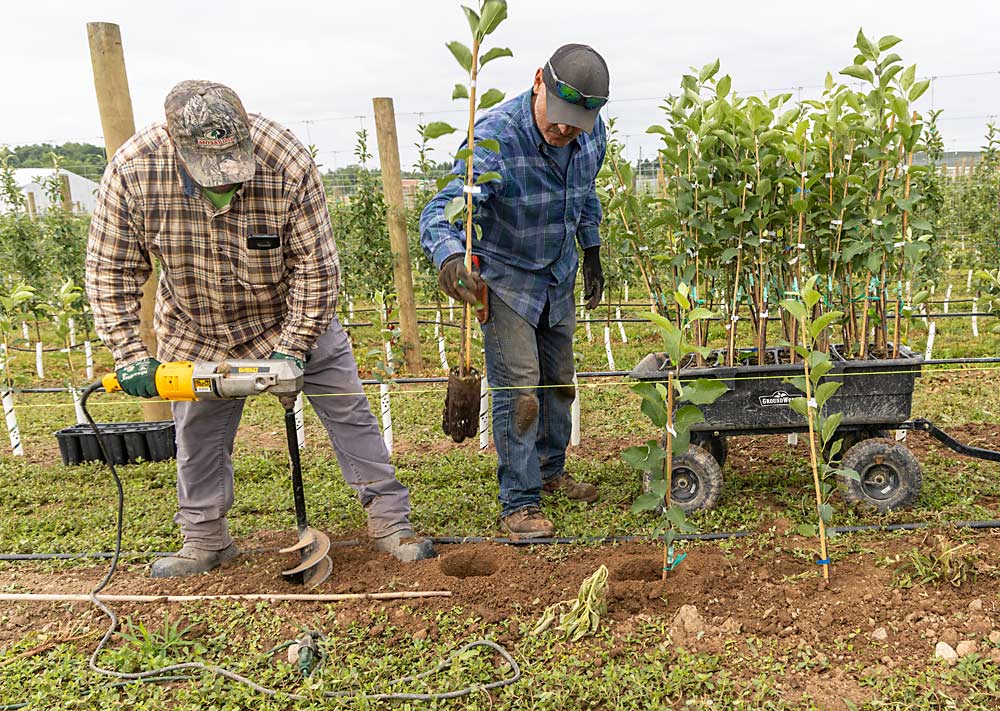
In early July, grower Noah Roth and a three-man crew spent a day and a half planting 850 potted apple trees in his family farm’s U-pick block in Lowell, Michigan. The trees are Pixie Crunch on Budagovsky 9. Roth chose Pixie Crunch because it’s a “great field trip apple.” He likes Bud.9 in heavy soil.
And the pots? That’s something new.
Calling them “pots” isn’t quite accurate. Each tree arrived with its roots and surrounding soil mix wrapped in a biodegradable paper membrane made by the Danish company Ellepot — a term now often used as shorthand for trees grown with this product.
Their usage is growing. More growers are trying them, and some nurseries not only sell finished trees but start their bareroot trees in Ellepots.
Research by Michigan State University horticulture professor Todd Einhorn has shown that trees in Ellepots can grow faster than bareroot trees during their first year in the orchard, and possibly beyond. In an Ellepot, most of the roots remain inside the paper membrane, but some grow through it, which prevents the spiraling and girdling that can occur in typical plastic nursery pots. But more important is their “air pruning” function: The escaping roots die in the open air, spurring the development of fine roots, which likely aid in water and nutrient acquisition and therefore tree growth, Einhorn said.
“It’s unbelievable,” Einhorn said. “They create mountains and mountains of fine roots.”
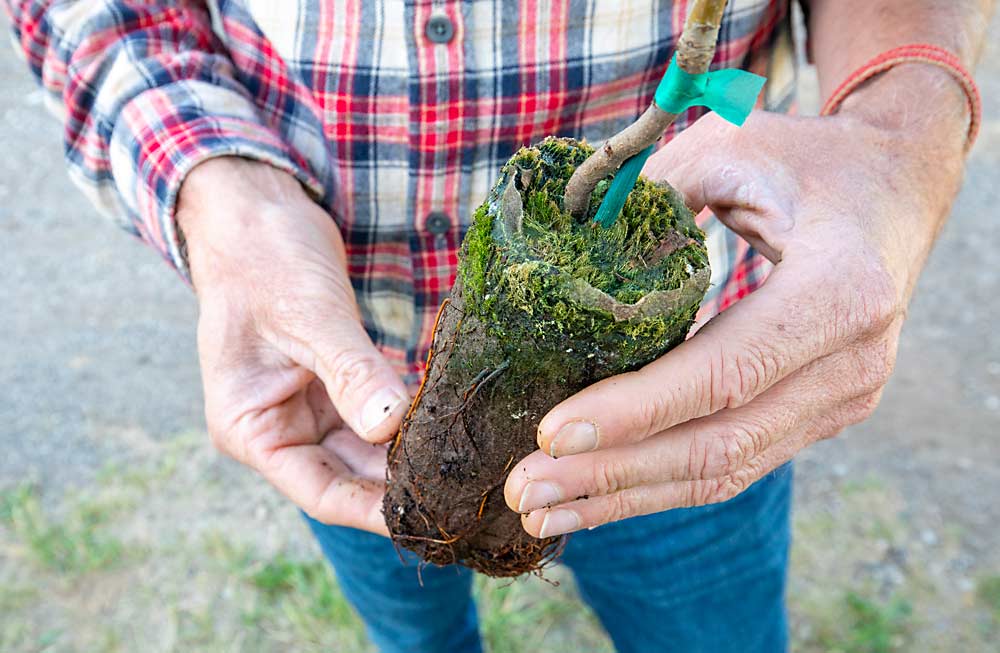
In his first Ellepot study, Einhorn collaborated with Sierra Gold Nurseries in California, the first adopter and largest provider of finished trees in Ellepots. About two-thirds of Sierra Gold’s tree sales to Pacific Northwest growers are in the paper pots, Vice President Reid Robinson said.
Ellepots are a unique product, and Sierra Gold started experimenting with them several years ago. The company liked their fast growth and now starts all of its trees in the paper membranes, even those eventually sold bareroot, he said.
The Ellepot company sells rolls of paper membrane to nurseries, as well as the machines that cut the paper and wrap it around the potting mix in which each tree is placed, Robinson said.
Roth, the Michigan grower, purchased his Ellepot trees from Wafler Nursery in New York. He chose Ellepots because they’re cheaper and the time between order and arrival is much shorter — six to eight months, rather than the typical two years, he said.
For a minimum order of 5,000 trees, Wafler Nursery charges $7.47 per bareroot tree, and $4.75 per Ellepot-grown tree, though shipping Ellepots costs more. The nursery can fit about 13,000 bareroot trees in a reefer trailer, but only 5,200 to 5,500 Ellepot trees. Still, the overall cost is lower than bareroot trees, said manager Jacob Wafler.
Roth said Ellepot trees require more work up front. Once planted, it’s crucial to begin watering them immediately — he and his crew were literally pulling irrigation lines as soon as the rows were finished. The smaller trees make weed control trickier, too, and take more time to train.
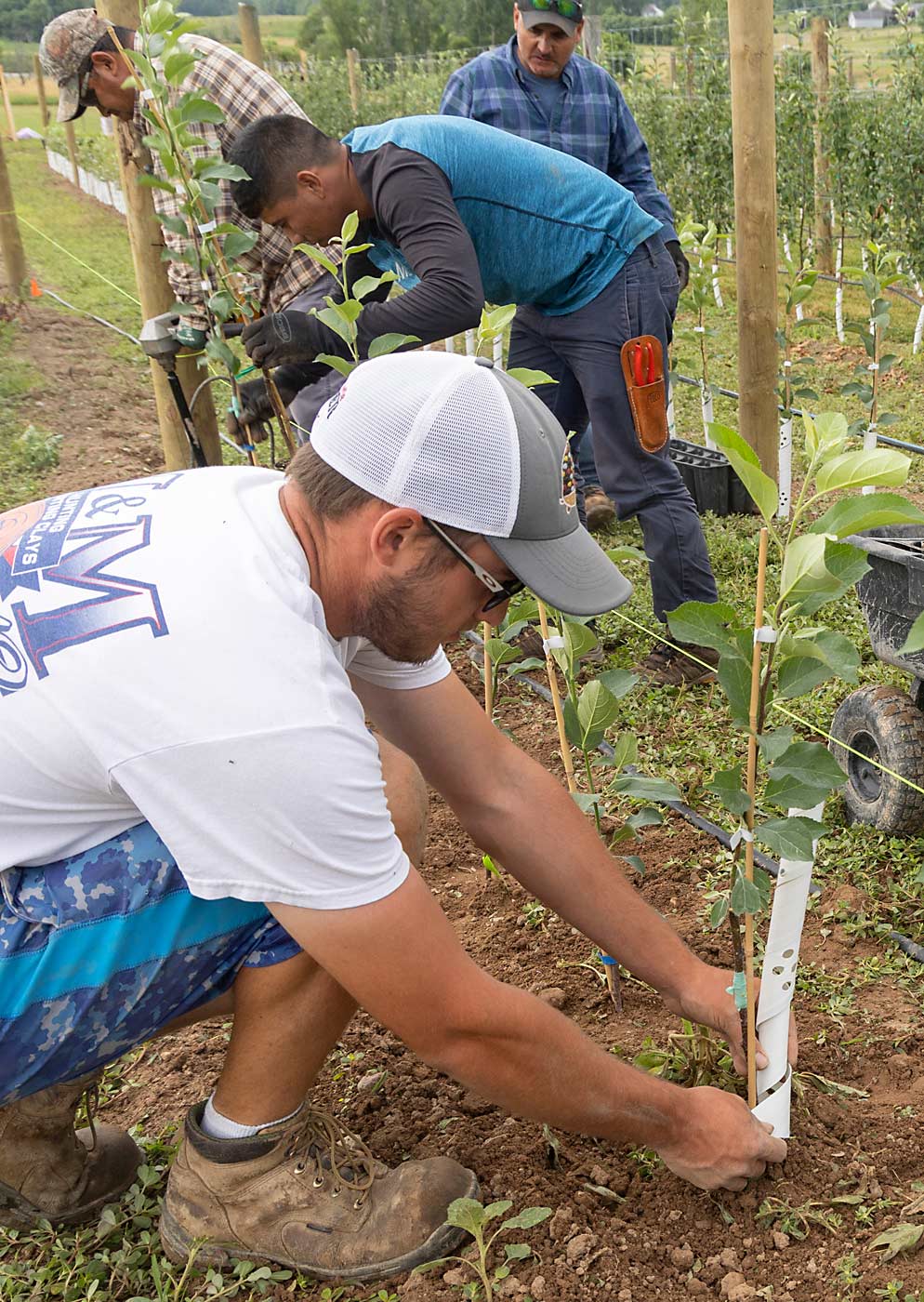
Wafler said Ellepot trees are not as robust as bareroot trees. You can’t “slam them in” the ground. The soil has to be worked up before planting. They also have a narrower planting window — about two weeks. You can’t plant them when they’re too young and tender, but if you wait too long, they start to outgrow the pot and shut down, he said.
If everything goes well with his initial planting, Roth plans to plant 35,000 Ellepot trees in his commercial blocks this year, probably Honeycrisp.
“Ellepot trees have a lot of merit, if you’re willing to deal with the challenges,” Roth said.
Research blocks
Einhorn partnered with Sierra Gold to grow trial blocks of Ellepot trees in nursery settings in 2017. The 1,200 bench-grafted Fuji, Honeycrisp and Gala trees on Nic.29 were grown either in typical nursery-style liner beds in field soil or in Ellepots filled with a peat mix. The trees were then evenly split between MSU and Sierra Gold facilities.
The next year, Einhorn’s team planted both the MSU and Sierra Gold trees in the ground at MSU’s Clarksville Research Center. In the first year after planting, the Ellepot trees far outperformed the liner-grown trees in fine root production and shoot growth, Einhorn said.
The greater root growth of Ellepot trees resulted in greater scion growth, which may facilitate a sustained growth advantage over time, he said.
“A greater root leads to a greater top, and a greater top leads to slightly earlier fruiting,” Einhorn said.
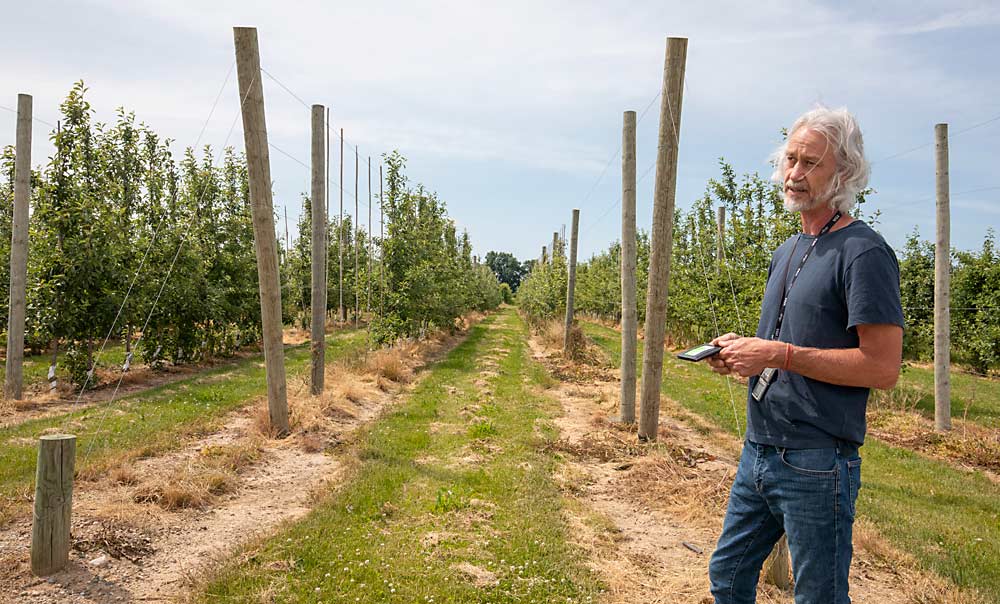
Though Ellepot trees start small, due to a one-year growth cycle, they don’t experience as much growth-limiting transplant shock as do bareroot trees, because their root systems aren’t disrupted, he said.
Einhorn is testing drip irrigation on Ellepots in another Clarksville block that was planted in June. Ellepot trees need water immediately and continually after planting. Early in the establishment year, root systems are largely confined to the substrate inside the paper membrane, and water conductance is limited by the difference in texture between the substrate and the native soil, he said. This makes water placement and frequency crucial. Einhorn is testing different emitter spacings, with some emitters between trees and others right next to them.
Another set of Ellepot trees growing as nursery plants in an MSU greenhouse will be tested with different rates of mycorrhizal inoculum to determine if the fungi can advance tree growth in the nursery and after transplanting, Einhorn said.
—by Matt Milkovich

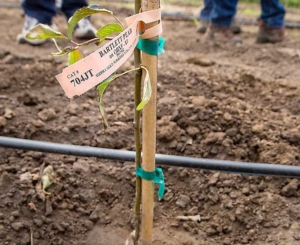





Leave A Comment